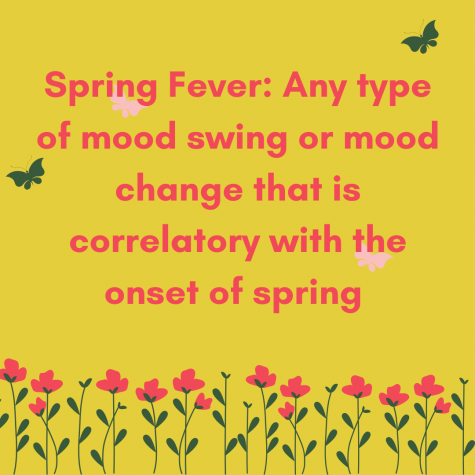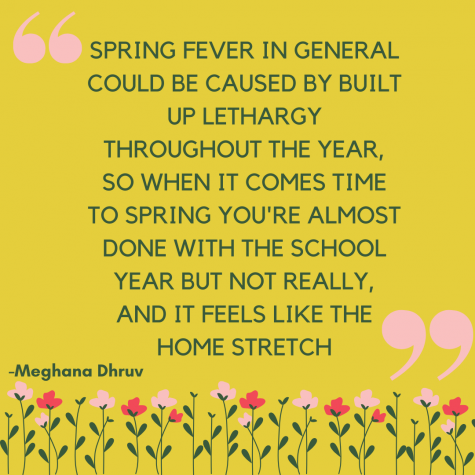Students experience spring fever at MVHS
After returning to in-person school, students consider how the spring fever phenomenon along with online school have affected them this year
May 4, 2021
Freshman Crystal Cheng recalls first experiencing the phenomenon spring fever — defined by Merriam-Webster as emotions like restlessness and laziness that coincide with the beginning of spring — a few weeks ago when she went out for frozen yogurt with one of her friends. Having spent much of the last few months inside due to COVID-19 restrictions, Cheng’s experience spending time outdoors brought an onslaught of emotions similar to those in the definition of spring fever. For Cheng, these feelings come from her immediately thinking about summer after experiencing warmer temperatures.
“Whenever I feel warm, I think of summer,” Cheng said. “Then I think of lazy days and periods of summer that go by without being productive.”
A study published by Innovations in Neuroscience correlates sunlight with serotonin, a hormone that stabilizes mood and happiness. According to NBC News and the study, as spring usually indicates an increase in sunlight, the increased time people spend outdoors leads to them feeling happier and less inclined to do more mundane tasks resulting in the phenomenon of spring fever.
Senior Meghana Dhruv feels that she rarely experiences any seasonal mood swings or spring fever as she finds temperature differences between seasons in California to be minimal and often imperceptible. However, she claims that those who have moved from different countries, or currently live in other areas with more extreme seasonal shifts could be prone to strong summer or spring fever symptoms.
Senior Isak Westelius lived in Sweden prior to moving to California and notices that in both Sweden and California, the passing of seasons bring a change in behavior as a result of the shift in weather. For Westelius, these feelings were exacerbated in Sweden, as the weather differences were much more extreme.

“It’s very dark [in Sweden] for a big chunk of the year and then when spring comes around, it’s like, ‘Oh, now it’s not negative 1,000 degrees,’ and you can actually be outside,” Westelius said. “Then it was very clear that there was a feeling of, ‘Let’s take this moment while it is still around and before it gets dark again.’ It’s a sort of a reminder that the seasons change with the passing of time, and it makes you want to do things.”
Contrastingly, Dhruv finds that she doesn’t encounter any feelings or moods directly correlated with spring. She instead attributes her occasional feelings of lethargy to online learning. After returning to in-person classes at MVHS, which began on April 19, she found that she felt more of a desire to be productive, especially due to the start date of in-person learning being after spring break.
In general, and excluding the influence of online school, Dhruv finds another reason as to why spring fever occurs, one that has nothing to do with weather.
“Spring fever in general could be caused by built up lethargy throughout the year, so when it comes to spring, you’re almost done with the school year but not really, and it feels like the home stretch,” Dhruv said.

With the school year wrapping up, Westelius observed that along with the symptoms of spring fever, he was in a downward “spiral of laziness.” He attributes this to how online school requires staying in one’s room all day, leading to the creation of an environment where he often feels tired. After he returned to school in-person, however, those feelings were alleviated, and he began feeling more motivated in his schoolwork.
“In school, there’s people around, and you’re reminded that the world is still moving,” Westelius said. “Sometimes when you’re sitting at home, it feels like time is standing still, so [in school] there’s that constant reminder that things are happening, there’s talking, there’s a future and things to worry about.”

















